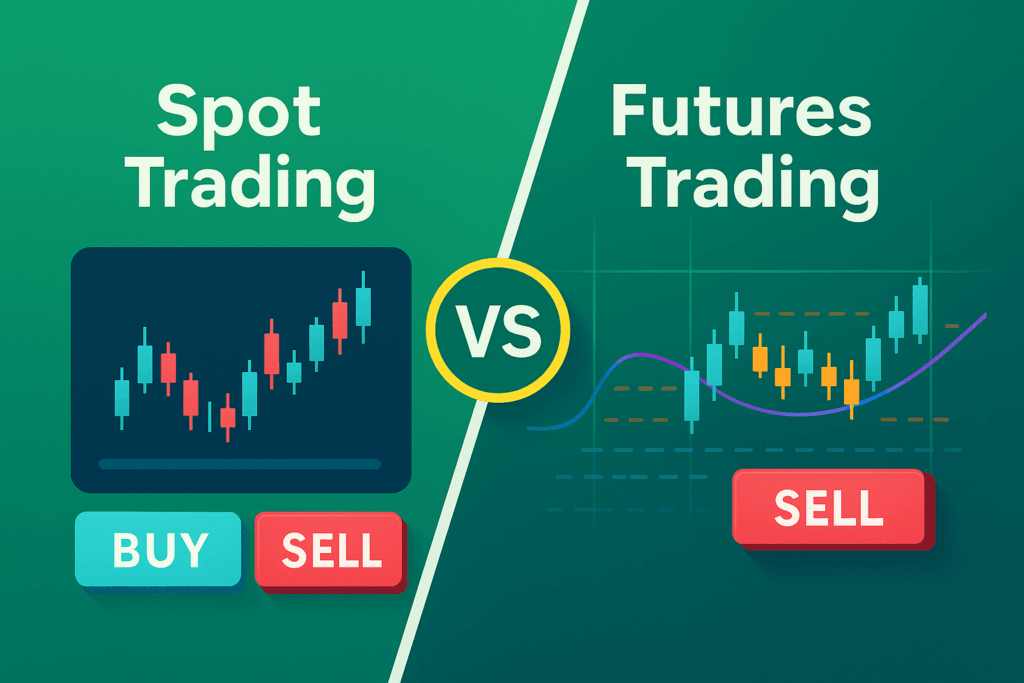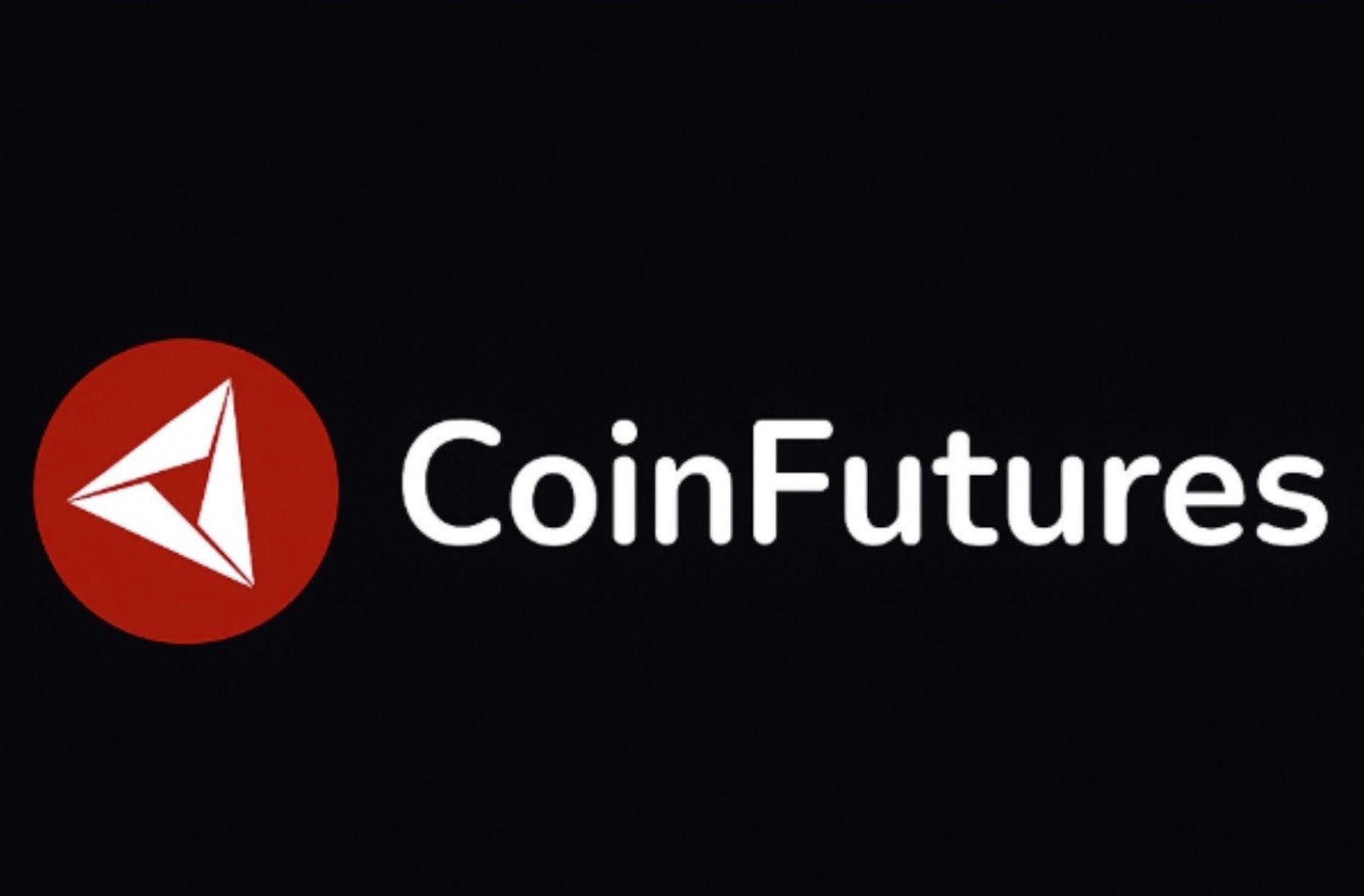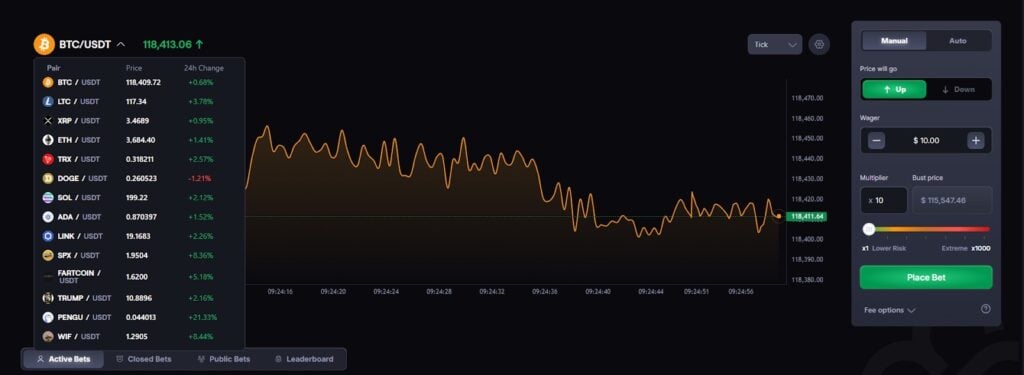Spot vs Futures Crypto Trading

The rapidly evolving crypto world offers a diverse array of trading opportunities, with spot and futures remaining the most popular among them.
Each trading option offers distinct advantages, tailored to different investment objectives and risk-taking propensity. Take spot trading for instance – it caters to those who prefer a simple, straightforward approach to betting on price direction. Speculators in the spot market buy and hold the actual asset they are betting on, and their gains or losses depend on its market price.
Futures trading, on the other hand, is favored by day-to-day traders looking to take advantage of market volatility to unlock short-term gains – without any exposure to the asset.
Basically, both trading strategies, when properly executed, have the potential to generate steady returns for investors. It is therefore no surprise that they both dominate today’s crypto market.
And as the industry continues to mature due to favorable regulatory news and increasing institutional adoption, interest in “spot vs futures crypto” debates are gaining traction, particularly among retail participants.
But the real question is – which is the better path for beginners and experienced traders among the two? Is it spot or futures? And what are the benefits and risks associated with both markets?
In this crypto futures vs spot trading article, we’ll break everything down, explaining how each of them works, what makes them unique, and which category of investor they may be best suited for.
Therefore, if the goal is to make a well-informed decision on crypto spot and futures trading in 2025, we recommend reading this article to the end.
Spot vs Futures Crypto: What Are They?
Before diving into the crypto futures vs spot trading debate, it’s important to briefly define both concepts.
What is Spot Trading?
As earlier mentioned, spot trading stands out as one of the most commonly used strategies in the crypto space. It involves buying, holding, and selling assets with the ultimate goal of profiting from price fluctuations, whether in the short or long term.
Unlike other forms of crypto trading, spot is relatively simple and straightforward to execute, which is one reason it has been the favorite of many beginners. No complex contracts, margin requirements, or expiries – just immediate purchase and sale of cryptocurrencies for short or long-term investment purposes.
Take for instance, if a trader buys 5 ETH at an average price of $3,500 and holds, they will gain $2,500 if the price rises to $4,000. However, in the likely event that it drops to $3,200, they will incur a loss of $1,500. Here’s exactly where the core principle of spot trading comes into play: buy low and sell high.
Certainly, apart from holding assets due to their underlying use cases, the narrative above forms the basis of many traders’ participation in spot trading. But what makes it less risky for all categories of investors, including beginners is the absence of leverage, which means returns and losses are limited to the capital invested.
More so, traders can retain full custody of their assets if they choose, with the flexibility to transfer, stake (where supported), or use them for payments.
Overall, spot trading is attractive for its instant trade execution, low transaction fees, and high potential for profit, especially during extremely bullish markets.
What is Futures Trading?
Crypto futures are financial contracts that allow traders to wager on how the price of a crypto like Bitcoin will move, either in the short or long term, without actually owning the underlying asset.
Unlike spot trading where investors only benefit from rising markets, futures enable participants to capitalize on both bullish and bearish price movements, depending on their positions.

For example, if a trader anticipates that the price of Bitcoin, perhaps due to rising whale accumulation, will increase to $125k, they can go long (buy). If the prediction turns out to be accurate, they will profit based on the terms of the contract.
Conversely, those expecting the price to fall can go short (sell), potentially benefiting from the decline.
That said, besides not owning the underlying assets, a number of other characteristics also set crypto futures apart from spot trading. One of them is expiration dates. Futures trading, unlike its spot counterpart, have expiration dates, which mark when contracts are settled.
More so, it allows the usage of leverage, enabling investors to control larger positions with relatively small amounts of capital, amplifying both potential gains and losses.
Let’s unpack this – the higher the leverage used for a trade, the higher the potential risks and returns. For instance, if a trader opens an ETH futures trade with $300 and 100x leverage, they will bag $30,000 in returns as long as the prediction materializes.
Interestingly, users are free to pick a leverage option in line with their investment goals and risk tolerance levels. Reputable brands in the industry like CoinFutures, for instance, offer a flexible leverage option of up to 1000x, ideal for experienced traders who prefer higher-reward, higher-risk futures trading possibilities.
In addition to expiration dates and leverage, it’s also important that futures traders are familiar with key terms like stop losses, funding rates, margin, and others.
Crypto Futures vs Spot Trading – Differences
As discussions around crypto spot trading vs futures trading continue to trend across online communities, here are the key differences to keep in mind:
Ownership
In spot trading, the purchaser gets the real cryptocurrency. For instance, buying one Bitcoin makes one a full owner, meaning they can store, transfer, or sell as they wish.
Futures trading means that the buyer of the contract does not own the underlying asset. What is traded instead is a contract that quotes the expected price in the future. It is geared towards speculation as opposed to ownership.
Leverage
Spot trading is dependent on available funds only. Assuming a trader has $500, that is the maximum they can trade.
Futures trading allows the use of leverage, which is the use of less money to control a larger transaction. For example, a 10x leverage allows an investor to put in a $5,000 position with only $500. This enlarges the profit potential, but it also increases risk.
Risk
With spot trading, the risk is typically lower as only the funds available will be used. In the worst-case scenario, a trader will only lose the amount they invested, but they will not owe more than that.
Futures trading, on the other hand, comes with higher risk, particularly due to leverage. Volatility in prices can cause sudden losses, and in some cases, traders will lose more than they invested, making risk management necessary.
Flexibility
Spot trading is ideal for traders focused on long-term investment, offering simplicity and direct asset ownership. That makes it a veritable tool for building and holding portfolios.
Futures trading, on the other hand, is more applicable to traders whose focus is on short-term price movements. It also provides the flexibility to make profits in both an upward-trending and a declining market, which can be invaluable when it comes to hedging or trading actively.
Crypto Spot Trading vs Futures Trading – Which One Should Investors Choose?
Choosing between spot trading or futures depends on one’s trading strategy, investment objectives, risk appetite, level of experience, and grasp of market dynamics.
Spot trading is considered the most suitable option for newcomers, due to its lower risks. It allows for a steady portfolio growth without leverage, margin calls, and liquidations.
But for experienced traders who can stomach higher risks and have a solid understanding of the market, futures trading could be an ideal avenue to maximize their gains within a short period of time.
Crypto Futures vs Spot Trading: General Tips to Keep in Mind
Here are some of the tips for trading crypto generally – whether it is through spot or futures:
- Choose a Reliable Exchange: Whether you are trading crypto spot or futures, picking a reliable exchange will play a crucial role in your overall experience. Therefore, endeavors to prioritize exchanges with a strong security setup, low fees, and an intuitive interface. For futures traders, one of the best options we recommend is CoinFutures.
- Start with Spot Trading: Spot trading is simpler and less risky, hence it is more suitable for beginners.
- Know the Risk in Futures: Futures trading has the potential for big returns, but at a higher risk. Be sure to understand the risks before getting started.
- Don’t Take Expensive Chances: Whether spot or futures trading, one should invest money that they can lose without incurring serious financial injuries.
- Use Leverage Carefully: Futures leverage could mean bigger gains as well as losses. For new traders, it is recommended that they start their futures trading journey with low leverage or evade it until they fully understand market dynamics.
- Follow a Trading Plan: Each trade should have a definite entry, exit, and risk plan. Impulsive trading or trading with emotions is more likely to give poor results.
- Practice Before Trading: New traders, in particular, who want to be acquainted with futures trading can use a demo account or paper trade to understand how it works without losing any money.
- Stay Informed: The crypto market is fast-moving. Staying informed through market updates, trends, and educational materials is key to making well-informed trading decisions.
There’s no definite answer when it comes to choosing between spot and futures trading. Spot trading is best suitable for traders who want to build wealth gradually while holding actual assets, while futures trading is for those who are seeking higher rewards that also come with higher risks.
Ultimately, the key lies in picking a method that suits one’s financial goals and level of experience, as well as trading responsibly.
CoinFutures – A No-KYC Crypto Futures Trading Platform With Up To 1000x Multipliers
While spot trading remains the most popular entry point when it comes to crypto trading, futures are increasingly stepping into the spotlight as well, especially as smart money traders as well as retailers hunt for avenues to maximize their gains.
However, in spite of its growing popularity, trading crypto futures comes with a concern that many find hard to ignore: financial privacy. So far, most platforms that offer crypto futures contracts are centralized, which means they mandate stringent KYC verification, including personal ID documents and address proofs.

That’s where CoinFutures steps in, offering all the futures perks in a game-like environment without demanding identity verification, making it suitable for users who want to engage anonymously and with minimal friction.
Built within the CoinPoker client, CoinFutures reflects the decentralized ethos that crypto truly stands for. It is designed to be straightforward and user-friendly, eliminating the usual hurdles associated with centralized exchanges. No lengthy registration process, withdrawal limits, or location-based restrictions. That approach makes it accessible to users from anywhere around the globe.
What also makes CoinFutures particularly unique is its support for a vast number of crypto assets, making it one of the best futures platforms for those aiming to trade multiple contracts in one spot.

In addition to Bitcoin, the platform also supports popular crypto coins like Ethereum, Solana, XRP, Dogecoin, Official Trump Meme, Fartcoin, XRP, Cardano, SPX6900, and a whole lot more.
Through the downloadable client, users can wager on price movements and make profits without buying spot crypto. Once inside the app, they should navigate to the “Crypto Futures” tab to place wagers with up to 1000x multipliers.
Strategic controls such as Take Profit and Auto Close are available as well, ensuring that positions are automatically closed based on pre-defined conditions, even when the trader is inactive.
In terms of payments, CoinFutures supports a wide range of deposit options, including popular cryptocurrencies like Bitcoin, Ethereum, BNB, Solana, MATIC, USDT, and USDC. Fiat users have nothing to worry about, as it allows deposits using convenient options like PIX, Apple Pay, Google Pay, and Mastercard.
There are no fees on both deposits and withdrawals, ensuring that traders keep more of their capital for trading
The crypto futures platform has already been covered across multiple major crypto YouTube channels and websites, all of them dubbing it the best option in the space.
Final Words
As the cryptocurrency scene keeps growing, traders are continuously searching for techniques that align with their risk tolerance and investment objectives. Two trading techniques are particularly popular: spot trading and futures trading.
Though they are often confused to be the same, they are very different in their implementation, risks, and manner of use. In this article, we compared both trading markets, detailing their unique characteristics to help investors make informed decisions.
FAQs on Spot vs Futures Crypto
Which is the best between crypto spot trading and futures trading?
Determining the better option between crypto spot trading and futures requires careful evaluation of your trading strategy, risk tolerance, and investment objectives.
Which is the best crypto futures trading platform to use in 2025?
For traders looking to level up their game with crypto futures in 2025, we recommend trying out CoinFutures, a no-KYC platform known for its simplicity, advanced tools, and high leverage.
This article has been provided by one of our commercial partners and does not reflect Cryptonomist’s opinion. Please be aware our commercial partners may use affiliate programs to generate revenues through the links on this article.

